Solid Woodworking Process
Unveiling Solid Wood Manufacturing Process & Methods
The solid woodworking process involves several key steps: selecting high-quality lumber, which is typically air-dried or kiln-dried for stability; cutting the wood to size using precise measurements; jointing and planing the surfaces to ensure flatness and smoothness; and assembling the pieces through methods such as glueing, doweling, or using joinery techniques like mortise and tenon. Once assembled, the piece is sanded to achieve a refined finish, followed by applying protective coatings like stains, oils, or varnishes to enhance aesthetics and durability. Finally, quality inspection ensures that the finished product meets design specifications and craftsmanship standards.
Types of Solid Wood Manufacturing Methods
Solid Wood manufacturing is a process that involves transforming raw lumber into products or components of a larger product. The manufacturing process can involve sawing, planning, drilling, shaping, sanding, and finishing. The type of wood manufacturing process and product can vary greatly depending on the type of wood being used and the end product
-
Sawing
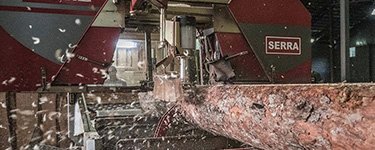
Sawing refers to the use of a saw machine to cut large pieces of timber into smaller, desired dimensions. This is the most common method of wood manufacturing, which involves cutting wood into different sizes and shapes. For example, when building a table, the timber might need to be cut into a flat slab for the tabletop and in other shapes for the legs. Different saw machines or blades can be used for different types of cutting or shapes.
There is a wide range of saw blades and machines available in the market, each suitable for a different purpose, such as table saw, jigsaw, chainsaw, coping saw, mitre saw, circular saw, band saw, hacksaw, bow saw, and veneer saw.
-
Seasoning
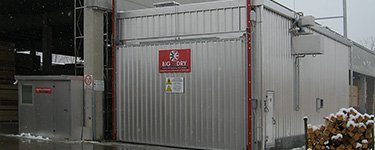
Wood seasoning, also known as kiln drying or air drying, is the process of reducing the moisture content of freshly cut wood logs to prevent warping, cracking, or rotting. Seasoning allows the wood to become more stable and resistant to decay, improving its quality and usability for construction, furniture making, and other woodworking applications.
-
Thicknesser / Thickness Planer

A woodworking thicknesser machine, also known as a planer or thickness planer, is a power tool used to achieve a uniform thickness across the surface of wooden boards. It removes material from the surface of the wood to achieve the desired thickness and smoothness, making it essential for preparing rough lumber for projects. The machine typically features adjustable settings to control the depth of cut, allowing woodworkers to work with varying thicknesses efficiently. By providing a smooth, flat surface, a thicknesser enhances the quality and accuracy of woodwork, ensuring better joinery and finishing results.
-
Surface Planer
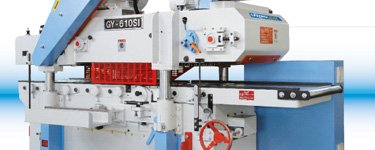
A surface planer, also known as a surface thicknesser, is a type of woodworking machine used to achieve a flat, even surface on boards and sheets of wood. Unlike a thicknesser, which removes material from the entire surface to achieve a uniform thickness, a surface planer only removes material from one surface to create a flat, smooth finish. This is particularly useful for preparing surfaces for gluing, joining, or finishing, as it eliminates warping, cupping, or other surface irregularities. A surface planer can be used to flatten glued-up panels, correct warped or twisted boards, or create a flat surface for laminating or veneering.
-
Ripping Machine
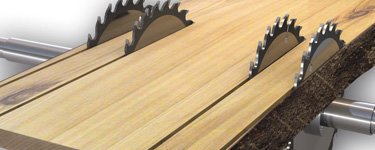
A woodworking ripping machine, often referred to as a rip saw, is a specialized tool designed for cutting lumber, plywood, or other sheet materials along the grain, thereby reducing their width. These machines can vary from simple handheld circular saws to more complex setups like table saws or industrial rip saws used in commercial woodworking applications. Features may include adjustable fences for precise width settings, powerful motors for efficient cutting, and various blade options for different material types. Ripping machines enhance productivity and accuracy in woodworking tasks by streamlining the process of sizing materials for further processing or assembly.
-
Cross-Cutting Saw Machine
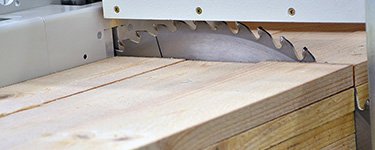
A woodworking cross-cutting saw is a tool specifically designed for cutting wood across the grain, rather than along its length. This type of saw can come in various forms, including hand saws, miter saws, and table saws with cross-cutting capabilities. Cross-cutting saws typically feature a tooth design that helps reduce tear-out on the wood surface, providing cleaner cuts. Miter saws, specifically, allow for angled cuts, making them ideal for framing, molding, and other precise joinery tasks. Proper technique and setup are essential for achieving accurate measurements and minimizing waste when using a cross-cutting saw.
-
Cut-off Saw Machine
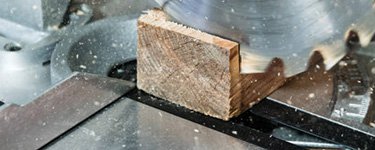
A woodworking cut-off saw machine, often referred to as a cut-off saw or chop saw, is a power tool designed to make straight and precise cuts in various types of wood and other materials. These machines are typically equipped with a circular saw blade mounted on a pivoting arm, allowing users to lower the blade onto the material to create clean cross-cuts at specific angles. Cut-off saws are commonly used in framing, trimming, and other applications where accurate length cuts are essential. They come in different variations, including compound miter saws that can bevel and miter at the same time, enhancing versatility for complex cutting tasks. Safety features like blade guards and proper personal protective equipment are crucial when operating these machines.
-
Mitre Saw Machine

A woodworking Mitre Saw, also known as a Miter Saw, is a precision woodworking machine commonly used for making accurate angled cuts in wood and other materials. It features a rotating blade that can be tilted and positioned to cut through material at precise angles, typically between 0° and 45°. This versatility makes miter saws ideal for various applications, including framing, trim work, and furniture making. Key features include adjustable miter settings, bevel control, and a reliable cutting mechanism. Miter saws can be powered by electricity, gasoline, or even manual operation, catering to different user preferences and needs.
-
Radial Arm Saw
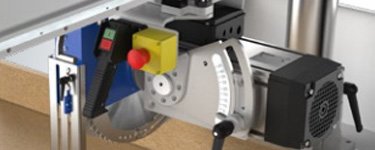
A woodworking Radial Arm Saw is a versatile, stationary power tool designed for making precise cuts in various materials, particularly wood. It consists of a circular saw blade mounted on a movable arm that can pivot vertically and move horizontally along a track, allowing for crosscuts, rip cuts, and angled cuts. This tool is particularly useful for larger workpieces or when multiple cuts need to be made quickly and accurately. While it offers great flexibility and precision, the Radial Arm Saw requires careful setup and operation to ensure safety and achieve optimal results. It has become somewhat less common due to the rise of more specialized and portable tools like miter and table saws, but it remains a valuable asset in many woodworking shops.
-
Sander
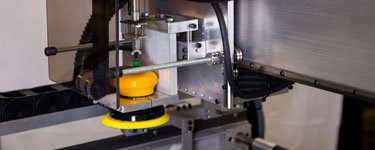
A woodworking sander is a crucial power tool used to smooth or shape wood surfaces by abrasion, removing imperfections, and preparing the material for finishing. There are various types of sanders, including belt sanders, orbital sanders, detail sanders, and disc sanders, each designed for specific tasks. Belt sanders are ideal for heavy material removal and finishing larger surfaces, while orbital sanders are excellent for finer sanding tasks and achieving a smooth finish. Detail sanders are perfect for intricate work and reaching tight corners. Most sanders utilize sandpaper, which comes in various grits, allowing woodworkers to choose the appropriate level of coarseness for their project. In any woodworking shop, a sander is essential for prepping surfaces, enhancing aesthetics, and ensuring quality results.
-
Finger Joint Machine
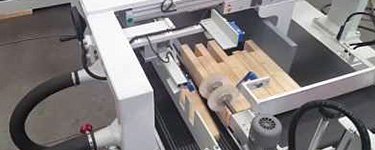
A woodworking finger joint machine is specialized equipment used to create finger joints, which are interlocking joints formed by cutting complementary profiles on the ends of two pieces of wood. This type of joint is particularly strong and is often utilized in cabinetry, furniture making, and other applications where durability and aesthetic appeal are important. The machine automates the cutting process, allowing for precise and consistent joint creation, increasing efficiency in production. Finger joint machines can accommodate various wood sizes and are typically adjustable for different joint configurations, making them a valuable addition to any woodworking shop focused on high-quality craftsmanship.
-
Copy Shaping/ Profiling – Moulder
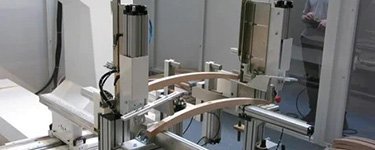
Woodworking copy shaping or profiling involves the use of specialized machines to replicate or create specific shapes and designs in wood materials. This process is essential for producing intricate details, such as moldings, trims, and spindles, by following a template or existing piece. Copy shapers can utilize various cutting tools and heads, allowing for versatility in creating complex profiles with high precision. The method enhances efficiency and consistency in woodworking, making it invaluable for both custom projects and mass production in furniture making, cabinetry, and architectural woodworking.
-
Tenoner – Mortiser
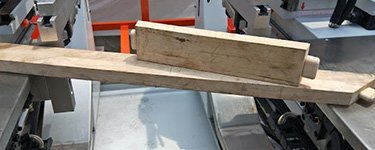
A tenoner and mortiser are two essential woodworking machines used for creating strong, precise joints in timber construction. The tenoner is designed to cut tenons, which are protrusions on the end of a piece of wood, typically used to fit into corresponding mortises (recessed holes) created by the mortiser. The mortiser specializes in cutting these mortises, ensuring they match the dimensions of the tenon perfectly. Together, these machines facilitate the construction of sturdy frame joints, such as those found in furniture, cabinetry, and timber framing, allowing woodworkers to achieve tight, durable connections with ease and accuracy.
-
Drilling & Boring

Drilling and boring are essential processes in woodworking that involve creating holes in wood for various purposes, such as joining pieces, accommodating hardware, or facilitating assembly. Drilling typically uses a drill bit to create holes of a specific diameter, often for screws or dowels, while boring refers to enlarging or deepening existing holes, which can be done with specialized tools like a boring machine or a Forstner bit. These techniques enable precise hole placement and size, contributing to the overall strength and integrity of woodworking projects, whether for furniture making, cabinetry, or other structural applications.
-
Milling
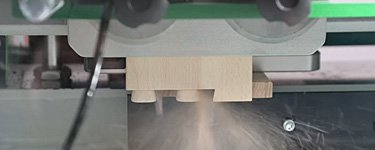
Woodworking milling is a machining process that involves removing material from a wooden workpiece to shape it into a desired form or size. Using a variety of milling machines or routers, woodworkers can perform operations such as flattening, thicknessing, or shaping edges and profiles. This technique allows for the creation of intricate designs, joinery, and detailed features in woodworking projects. Milling enhances the overall finish of the wood while ensuring precise dimensions and uniformity, making it an essential part of crafting high-quality furniture, cabinetry, and other wooden items.
-
Machining Center
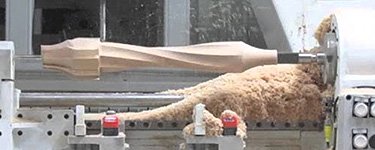
A woodworking machining center is a versatile, computer-controlled machine designed to perform various operations such as cutting, drilling, milling, and shaping wood. These advanced machines streamline the woodworking process by allowing for high precision and repeatability, making them ideal for producing complex parts and components in furniture, cabinetry, and other applications. With the ability to switch between different tools and perform multiple operations in a single setup, machining centers significantly enhance productivity and reduce production time while ensuring consistent quality in finished products. Their integration of computer numerically controlled (CNC) technology enables woodworkers to create intricate designs and automate repetitive tasks, transforming traditional woodworking into a more efficient and innovative process.
-
Router

A woodworking router is a power tool used to rout or hollow out wood, creating decorative edges, profiles, and patterns on various wood surfaces. It works by removing small shavings of wood from the surface, using a rotating cutting bit attached to a motorized base. Routers can be used to create a wide range of effects, from simple edge profiles to intricate designs and moldings. They are commonly used in furniture making, cabinetry, and woodworking projects, allowing craftsmen to add details and textures that enhance the aesthetic value of the finished piece. Routers come in various sizes and types, including fixed-base, plunge, and trim routers, each suited for specific tasks and applications.
"Choosing the Right Machinery & Process?"
Wood manufacturing is an art form that requires skill and craftsmanship, as well as knowledge of the materials and techniques used. Throughout the years, wood manufacturing has evolved to include new and innovative methods, allowing for faster production and better-quality products. As a wood manufacturer, it is thus important to identify the wood manufacturing techniques most suitable for your business as well as the needs of your buyer personas.
“we at Jovas Tech Solutions guide you through the complete process of manufacturig and help you find the right machinery with right specification & needs keeping in mind the future enhanement.”

















